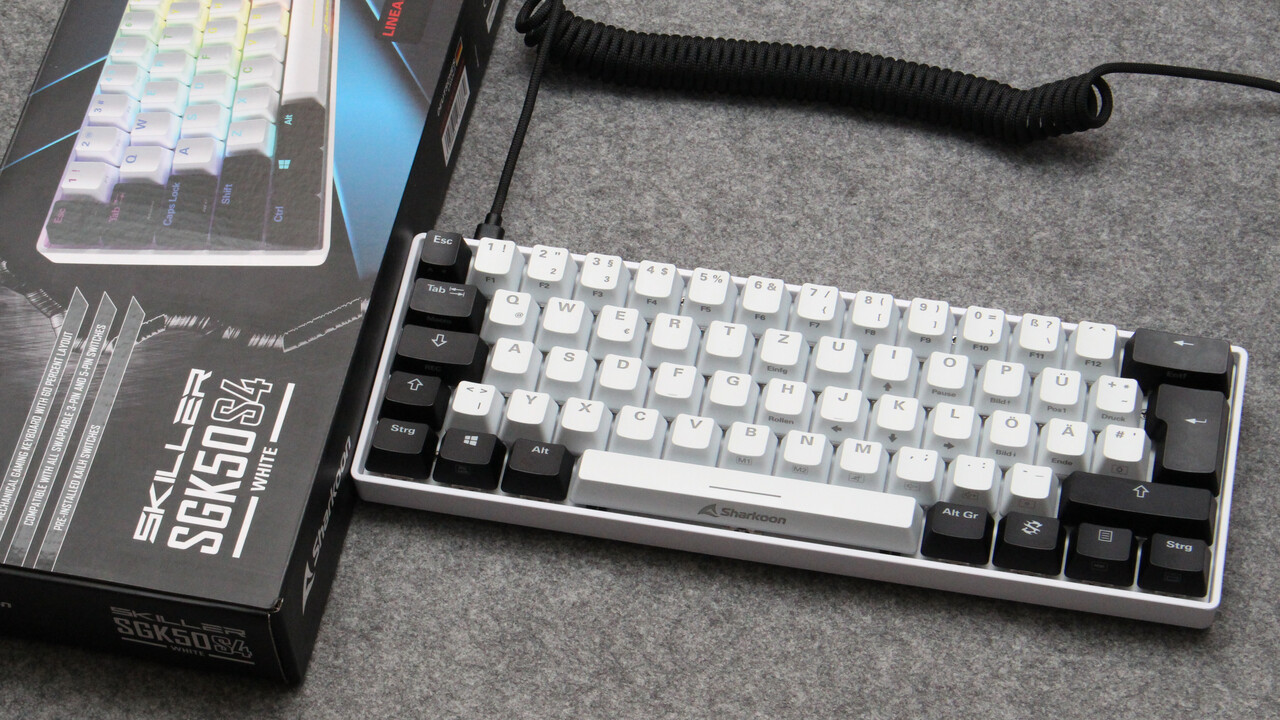Endorfy Celeris 1800 in Review: The Gray-Yellow Keyboard Taps “Klack-Klack-Klack” 35 Comments
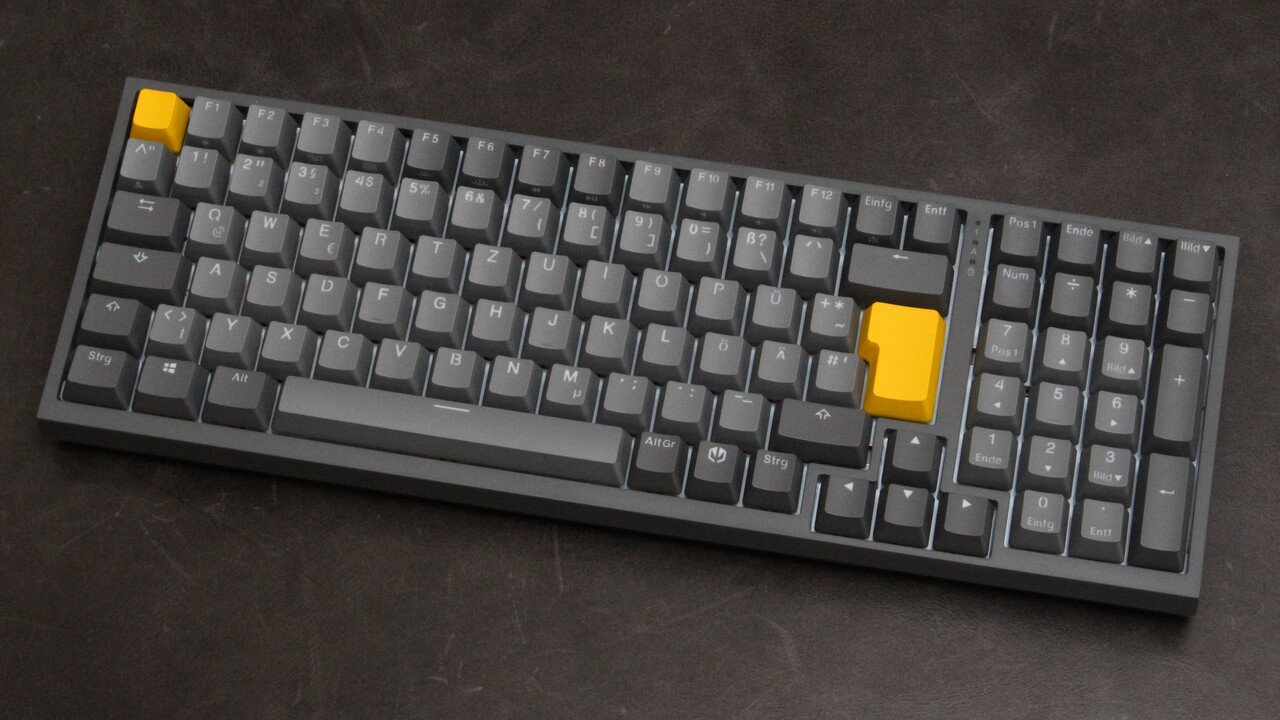
Klack-Klack-Klack in Gray-Yellow: Endorfy brings back the 1980s with the Celeris 1800. The keyboard captivates with a 96% layout and extensive features for just two digits. A key design aspect was the “sound” of the buttons and housings. This has audible effects.
Table of Contents: Gray-Yellow Keyboard Taps “Klack-Klack-Klack” Endorfy Celeris 1800 at a Glance Button: Solid Yellow Everyday Life and Acoustics Acoustics: Audible Presents Everyday Life: Works Software: Absolute Baser Fazit: You Can Do It
Endorfy builds a versatile and rock-solid keyboard. Predicate: “You can do it” if you know what you want and what you’re getting into. However, you should have two, perhaps more specific, wishes: this, and a more extroverted attitude. All the details from the test.
Endorfy Celeris 1800 at a glance
As a 96% layout keyboard, the Celeris 1800 “prints” the CO of its key field. The other keys are pushed together. The advantage of this: the 96% layout is not as wide as a tenkeyless keyboard, but has a full numeric keypad. The arrow and scroll keys also remain removable, sticky, and unusable. The manufacturer compares it to a laptop layout.
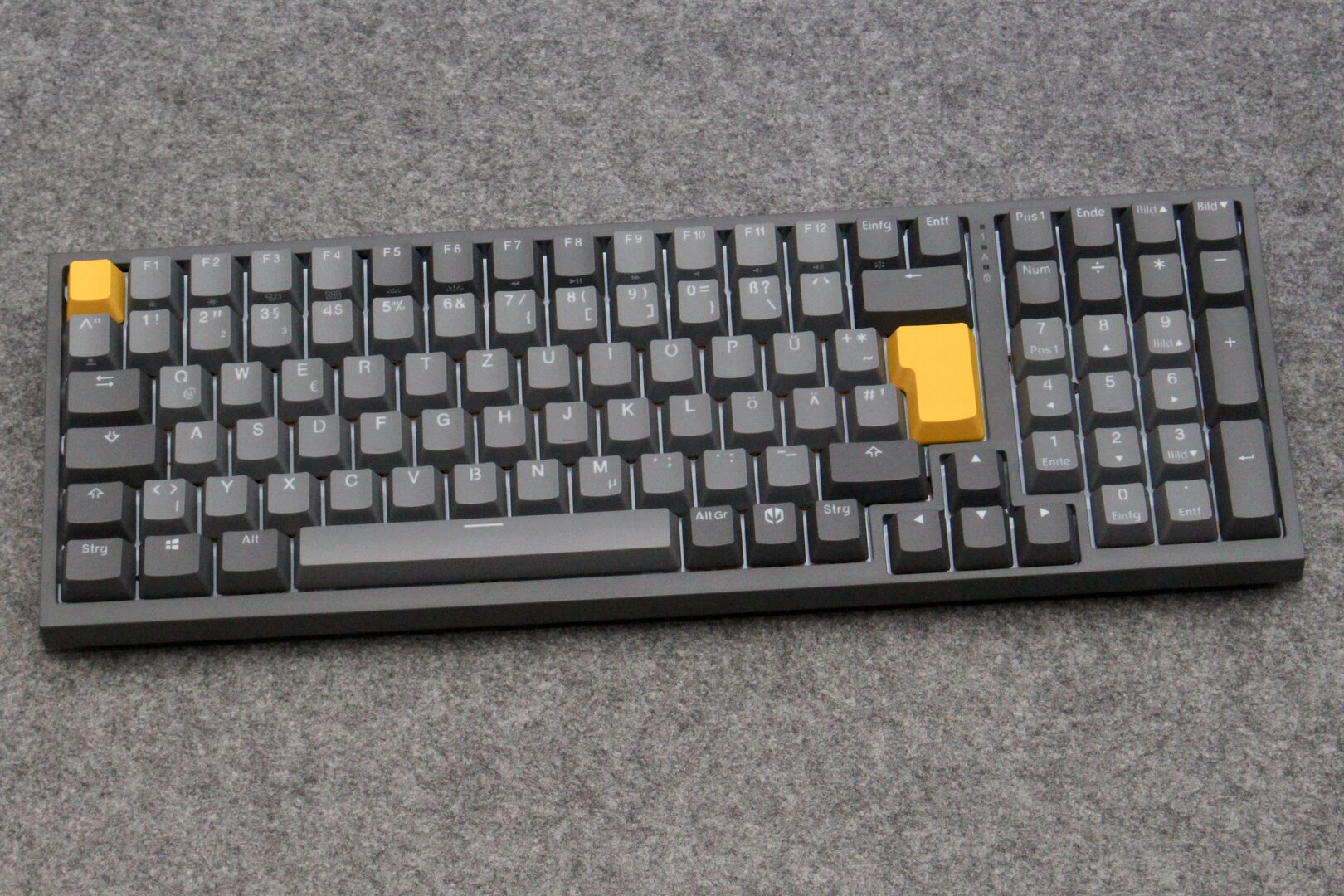
Almost all the buttons: the 96% layout still saves space 1 out of 5
Endorfy builds additional keys into the side of the chassis. On the left are three volume control buttons, and on the right are two sliders that switch between Windows and Mac mode and transmission types. There’s USB C, 2.4 GHz radio, and Bluetooth.
The durations are at maximum brightness, a polling rate of 1000 Hz, and “dynamic lighting,” i.e., flashing effects, at a maximum of 24 hours in radio mode; Endorfy indicates 25 hours via Bluetooth. With static lighting, the durations drop to 16 or 21 hours; the LEDs are off, but it is 104 and 121 hours. Silentiumpc Endorfy Celeris 1800 Size (L × W × H): 38.4 × 13.0 × 4.5 (5.8) CM DISPAGE: ISO 101 (96%) Weight: 1,120 g Housing: Plastic cable: 1.80 m, USB / Type-C USB (modular), Bluetooth, radio: 1.80 m, USB / Type-C USB (modular), Bluetooth, radio: 1.80 m, USB / Type-C USB (modular), Bluetooth, Radio? Hub Function: -Keke Rollover: N-Kro Switch: Endorfy Yellow
Headset-compatible switch plate
Material: PBT plastic
Lettering: Double-shot molding Additional Keys: -Media Functions: Mute, volume, play/pause, forward/back Additional Functions: Brightness (rules, off), LED modes, game mode, desktop functions, system functions Lighting: Color: RGB
Modifications: Breathing effect, wave effect, reactive mode, all-round activation, color loop
Other: Individual LED profiles Macros and programming: 1 profile, hardware operation
Complete (including secondary assignment) programmable
Open Source Firmware Price: €99
Button: Solid Yellow
There is a selection of buttons. The keyboard comes with Endorfy yellow switches, which are manufactured by Gateron. However, hot-swap drivers allow for any 3-pin or 5-pin button to be installed in the MX design.
The LED snare with two rails per side is currently a “standard Gateron feature.” It reduces keycap play and improves feedback when the finger is positioned suboptimally. Lubrication is now standard, as is the nylon housing, which primarily affects the sound. In addition to the somewhat shortened center, which suggests a serrated entry, the two-stage spring is a special feature of the buttons.
The special feature of Endorfy’s yellow switches is the two-stage spring.
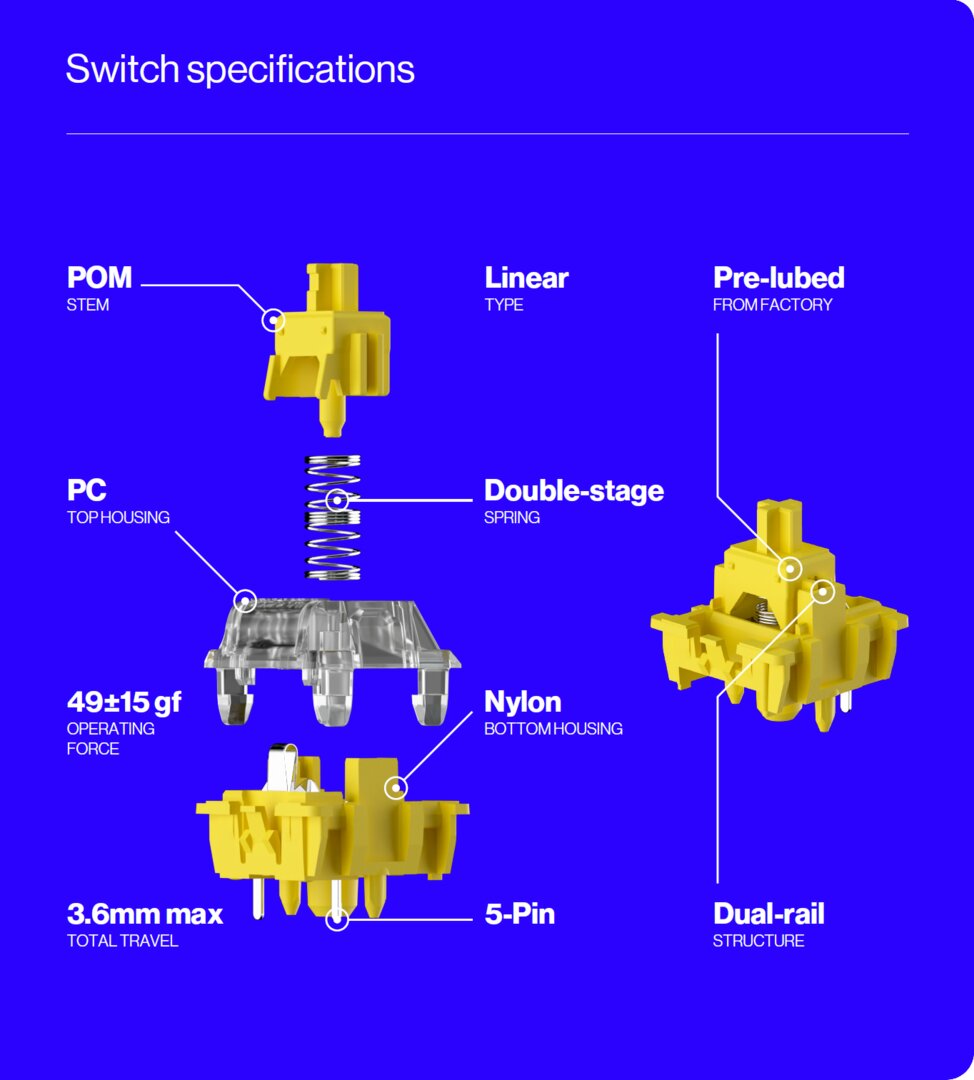 Here too, the result is a snappy button layout. There’s also a consistent feel throughout the center. Even though the resistance is rated at 49 grams when triggered, the buttons feel agile. In addition, the lubrication slips into a low-key feature. In the small print, however, it can be added that, if the trigger is unfavorable, minimal residue can be caused in the case of individual triggering; then you can notice the mechanics. Solid middle class, that is, this yellow Endorfy switch.
Here too, the result is a snappy button layout. There’s also a consistent feel throughout the center. Even though the resistance is rated at 49 grams when triggered, the buttons feel agile. In addition, the lubrication slips into a low-key feature. In the small print, however, it can be added that, if the trigger is unfavorable, minimal residue can be caused in the case of individual triggering; then you can notice the mechanics. Solid middle class, that is, this yellow Endorfy switch.
The key illumination includes Endorfy as a subtle glow from the keycaps. Although they are described as translucent, they filter a lot. Therefore, the label remains pale, while the key field shines in strong colors. Lifeline: The gray of the keyboard erupts a little, it also tolerates “water colors”.
Daily Life and Acoustics
Endorfy does a lot with the layout and design. “Sound” is also liked. However, not everyone will be able to live with it. Furthermore, there is also room for improvement for a B version.
Acoustics: Audible present
Cheap keyboards are wobbly and sound cheap. This is different with the CELERIS 1800 switch platforms. FR4 and two layers of silicone insulation feathers address the attacks and filter out the high frequencies. However, the “warm, deep click sound” at rest is noticeable relative to the price. Compared to no isolation, the attack becomes smoother, but produces a clear “clack.” The sound is definitely present, but not as clearly defined as in the luxury class—and in a more penetrating manner, remaining quiet, but still clearly audible even with careful attacks. This is a conscious design decision.
The lighter “click” of an MK770 (review) remains at the end. A Sharkoon SGK50 S2 (review) sounds rich and dull. It doesn’t elaborate attacks and acts quietly, albeit with a bit of a snap. Part of the quietness is created by thicker keycaps. Endorfy uses models with a single wall thickness that doesn’t filter out higher sound frequencies. With the S2’s keycaps, it becomes dull, but remains relatively clear when idle. First, Gateron G Pro 3.0 Yellow makes the Celeris 1800 duller and a bit quieter.
Partially, the sound image is created through the buttons. Another crossover, in this case with Gateron Jupiter Red and the Keychon Q5 Max, again reveals differences. The keys more than twice as expensive are lighter, clickier, clearer, and more precise when idle. With the Endorfy buttons, however, it becomes more penetrating, more “clicky,” and more pungent in sound and therefore much more present, making it more unpleasant in personal preference. In the factory configuration, however, it presents itself more clearly and much more like the Keychrone, producing audible but subtle attacks.
This shows: Endorfy focuses specifically on the low-frequency sound of the tasters and chassis, but rather on the audible “clicks,” which are more present and more space-filling. Despite all the descriptions of “quiet,” the Celeris 1800 is a keyboard for people who want to hear attacks clearly. You must have that taste.
Everyday life: how it works
In principle, Endorfy combines the 75% form factor with a numeric keypad with the layout. Since the arrow keys are outlined, orientation without eye contact is easier than, for example, with a Sharkoon SGK50 S2 with the same number of buttons. The function keys are also easier; they are also well laid out. The most important are the positions with clear topography.
Only the tightly arranged F-line can interfere; it also sits slightly below the numeric keys. This paragraph makes it easier to find the buttons, but the readability of the secondary lettering is reduced. Placing the multimedia button on the side of the keyboard – Endorfy calls it a “smartphone-inspired solution” – turns out to be a good idea. However, not for the volume control: the resistance is suitable for individual clicks, i.e. the mute, the “toggle switch”, on the other hand, is rather uncomfortable with continuous operation. It’s good anyway: louder and quieter can be reprogrammed via software and thus take on a different function.
This makes sense with this keyboard, as the missing keys otherwise compensate for a fixed FN level. The standard layout can be used for everyday use, but it has the usual drawbacks of fixed FN keys and functions. The selection of LED modes is particularly noticeable here. They can only be switched sequentially and mostly flash. If you miss lighting or static effects, you need software or click 17 times. This would be extremely desirable.
Software: Absolutely Basic
Re-control solutions would be extremely advantageous. They are from the Celeris 1800. Very rudimentary software is included for programming. It is reminiscent of other software solutions, for example, from GG, only in a different design and 1980s look. This remains your only advantage over QMK and via.
Because the range of functions remains limited. The software is sufficient for programming LEDs and buttons, but also requires a little effort. The selection of functions and LEDs, if your own profile needs to be created, is entirely customizable via clicks and drag and drop.
This is quite simple and underlines that smaller suppliers—obviously—cannot compete with the development resources of the top dogs. If desired, the QMK/VIA combination becomes a unique solution, but at the cost of a brand identity that is fully reflected in the design, which plays a secondary role in “mid-range” manufacturers anyway. Sharkoon has understood this better.
The main key function can be changed
The main key function can be changed (image 1 of 4)
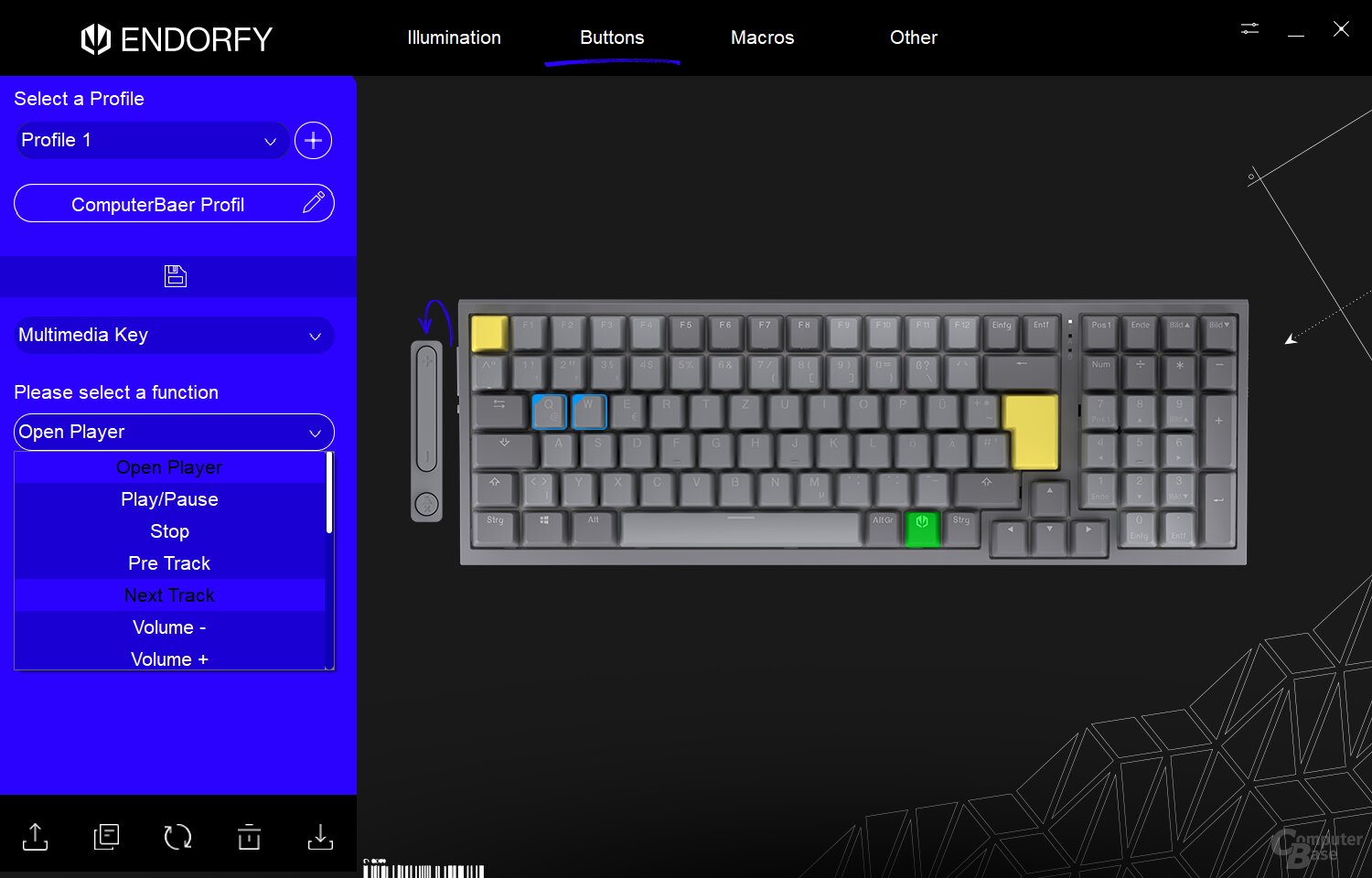
Endorfy builds a versatile and rock-solid keyboard. The premise is: “You can do it” if you know what you want and what you’re committing to. However, you should have two, perhaps more specific, wishes: this, and a more outgoing attitude.
This is necessary for the grayish-yellow design, which you should welcome aesthetically. But especially for the volume. Celeris 1800 users who like to hear an audible noise when stopped and also prefer more modern keyboards will also prefer the Celeris 1800. The acoustic design is designed.
Endorfy Celeris 1800
Endorfy Celeris 1800
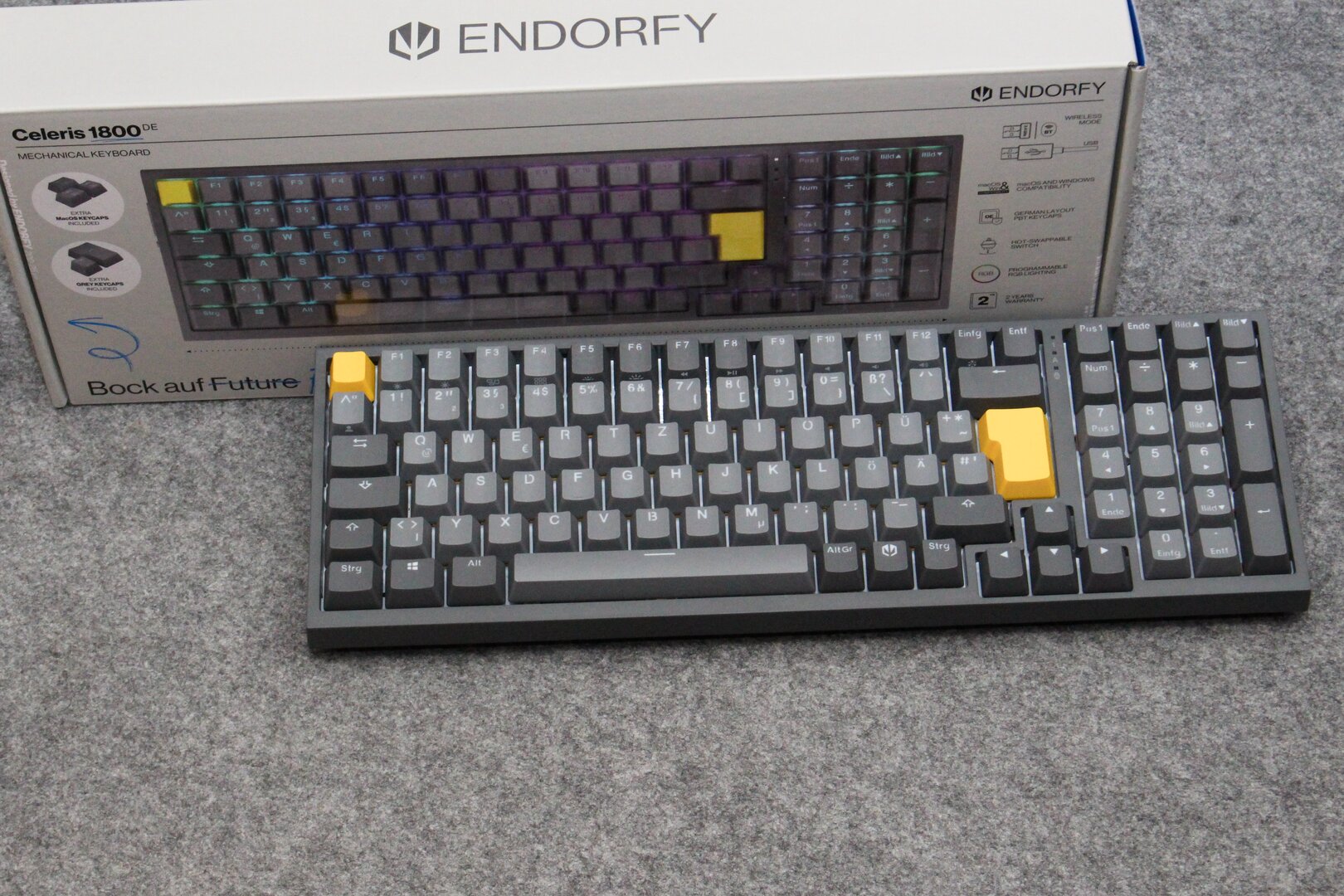 The biggest competitor is the Sharkoon SGK50 S2 (review). There, the keys are pushed further back, but the source is programmable; operation is only possible via cable, but much more subtle.
The biggest competitor is the Sharkoon SGK50 S2 (review). There, the keys are pushed further back, but the source is programmable; operation is only possible via cable, but much more subtle.
Techastuce received the Celeris 1800 from Endorfy on loan for testing. The only requirement was the earliest possible publication time. The manufacturer had no influence on the test report; there was no obligation to publish.
Was this article interesting, useful, or both? The editorial team welcomes any support from Techastuce Pro and disables ad blockers. Learn more about screens on the computer base.
Topics: Input Devices, SILENTIUMPC Keyboards

Victor explores mechanical, ergonomic, and gaming keyboards to combine comfort, precision, and responsiveness.

